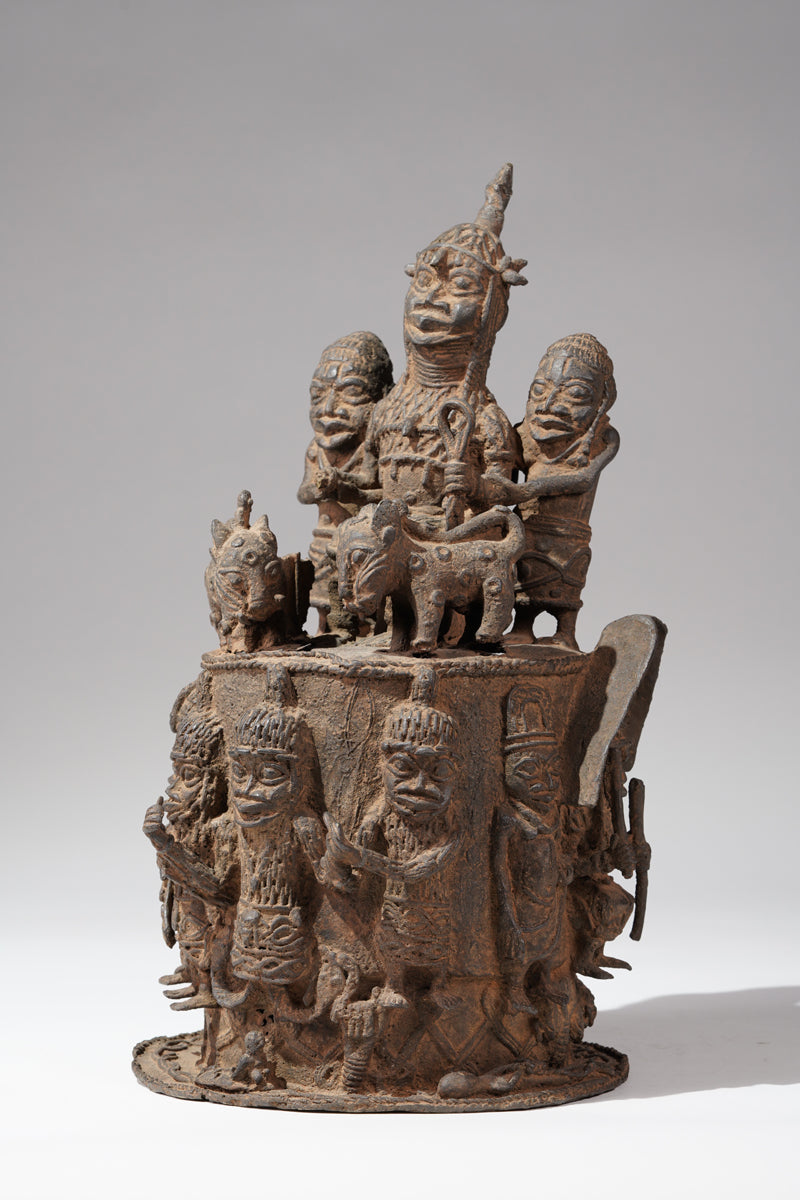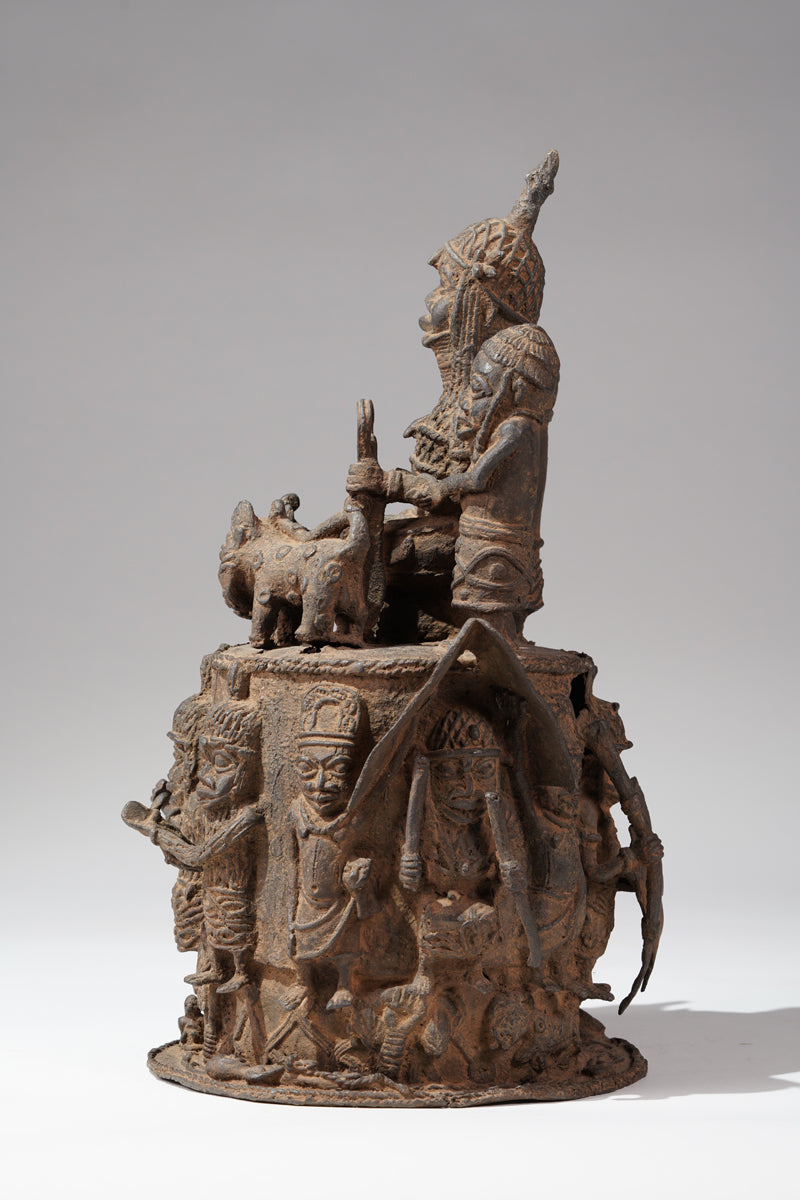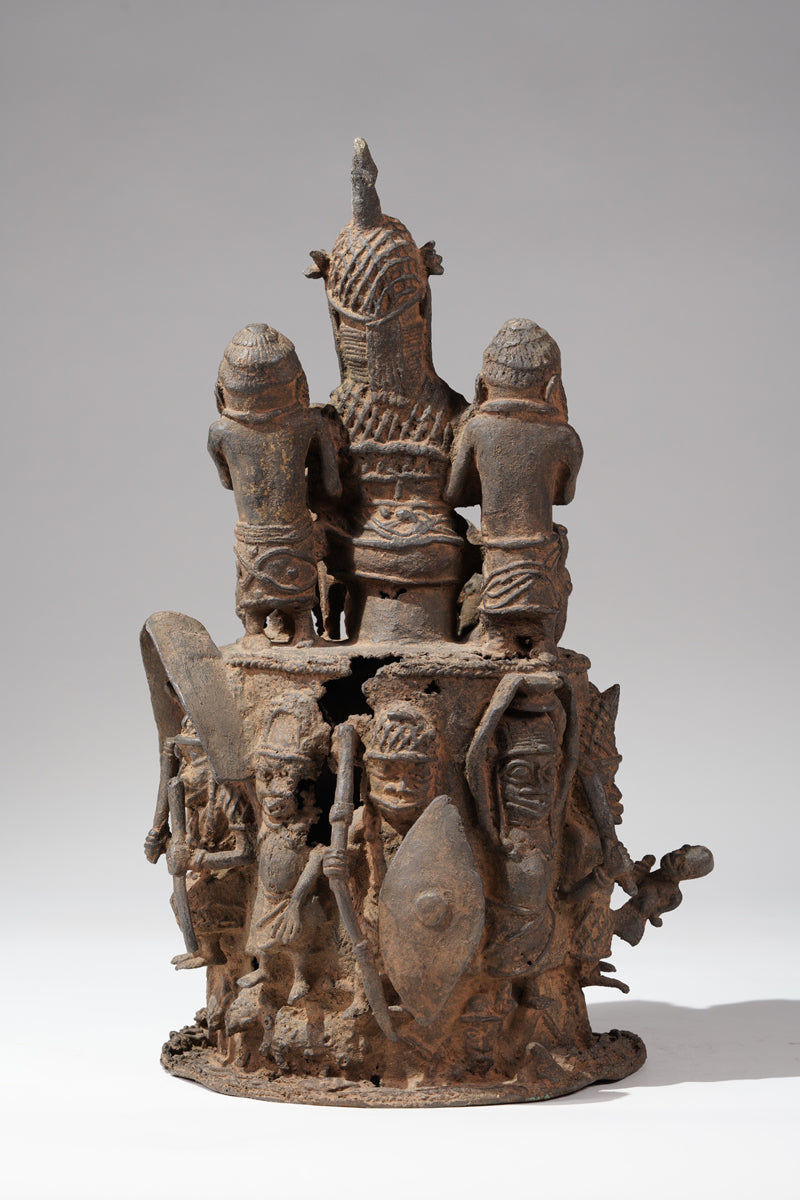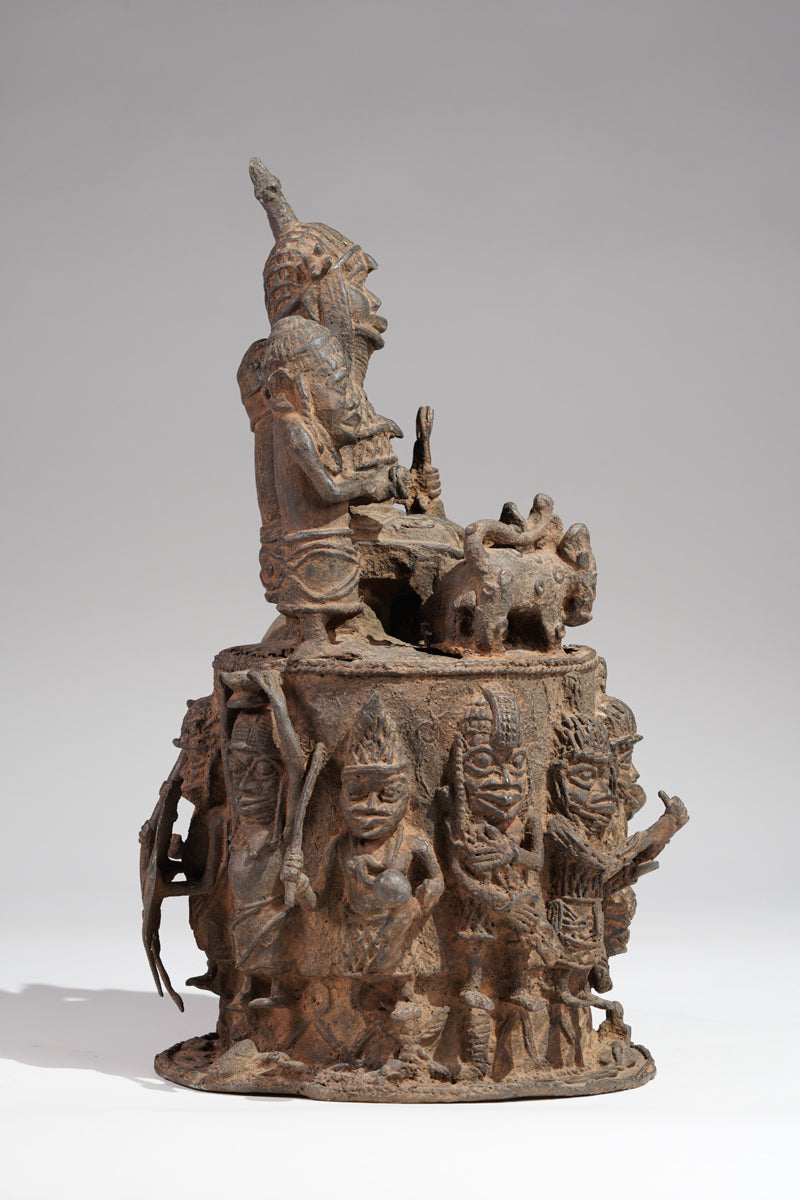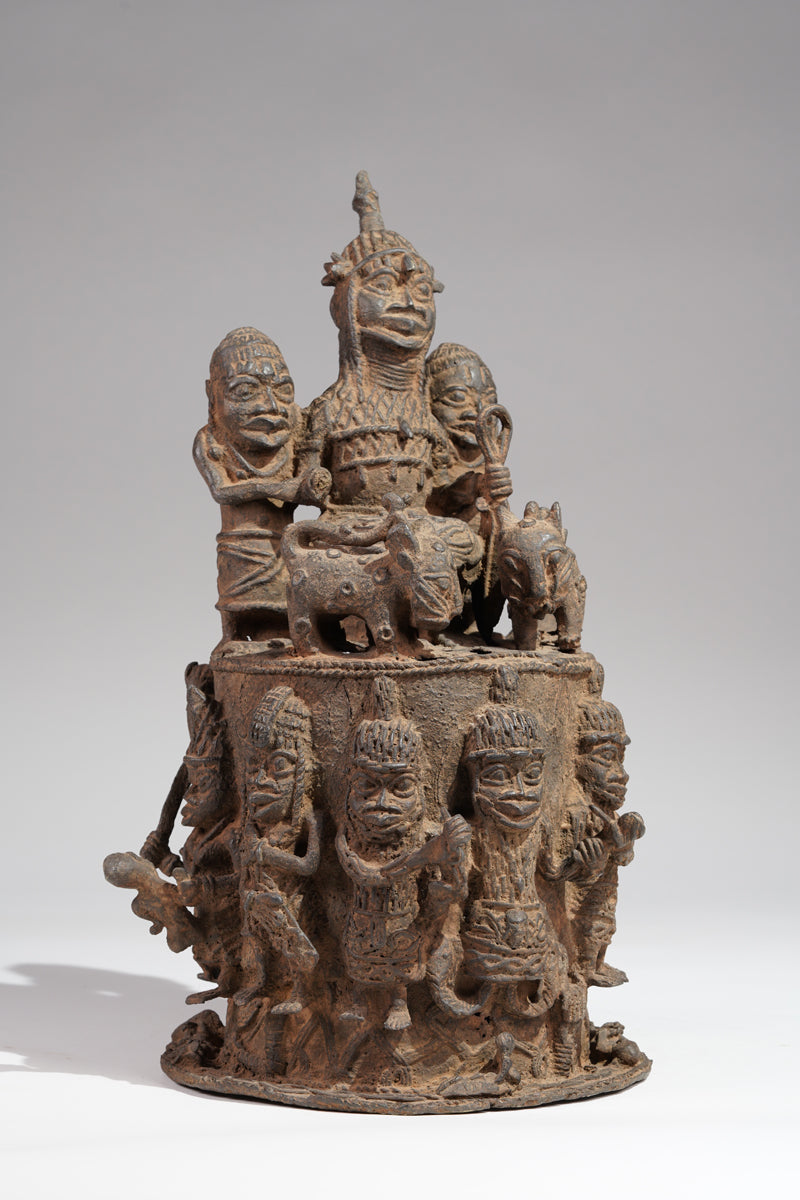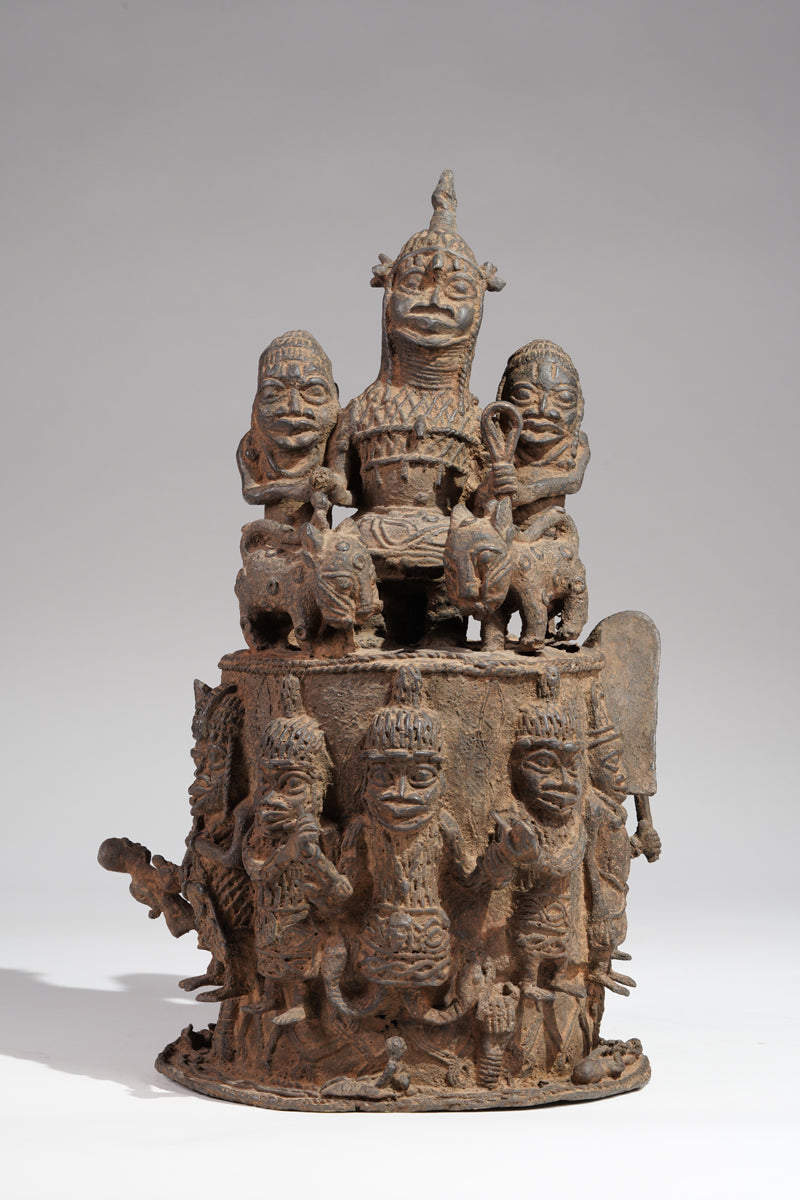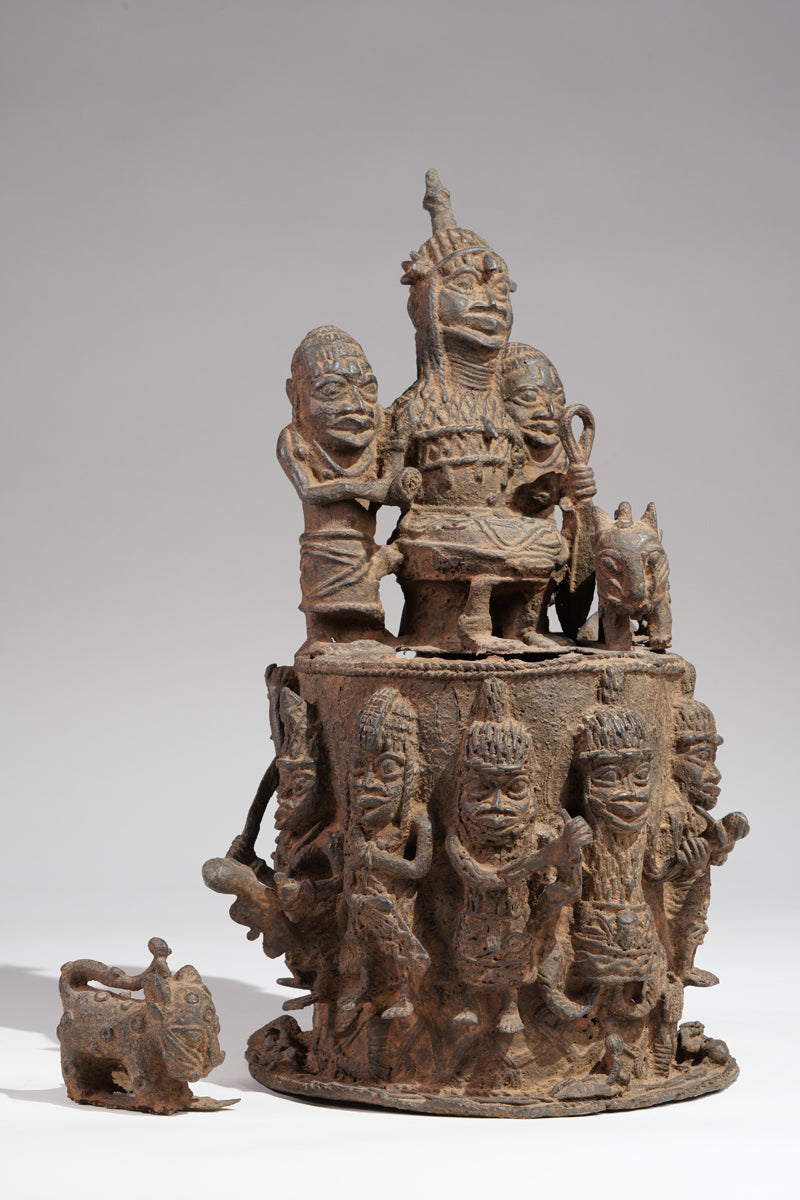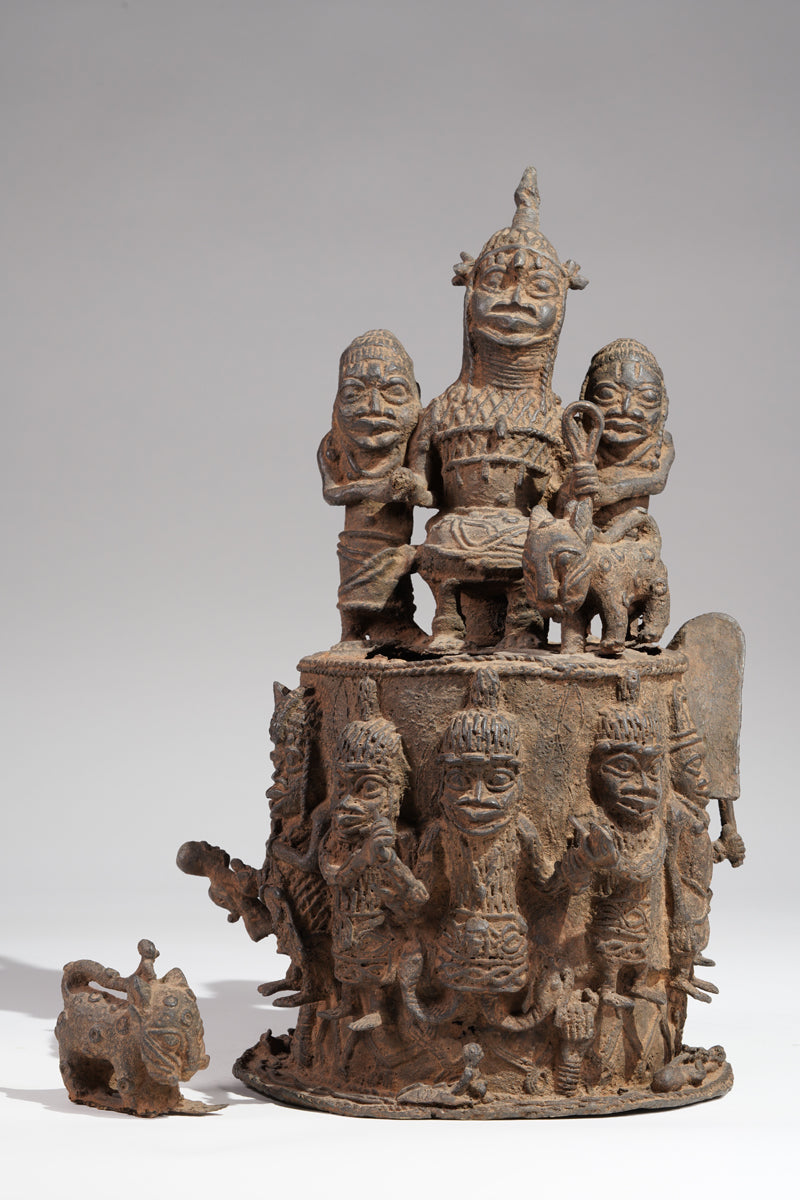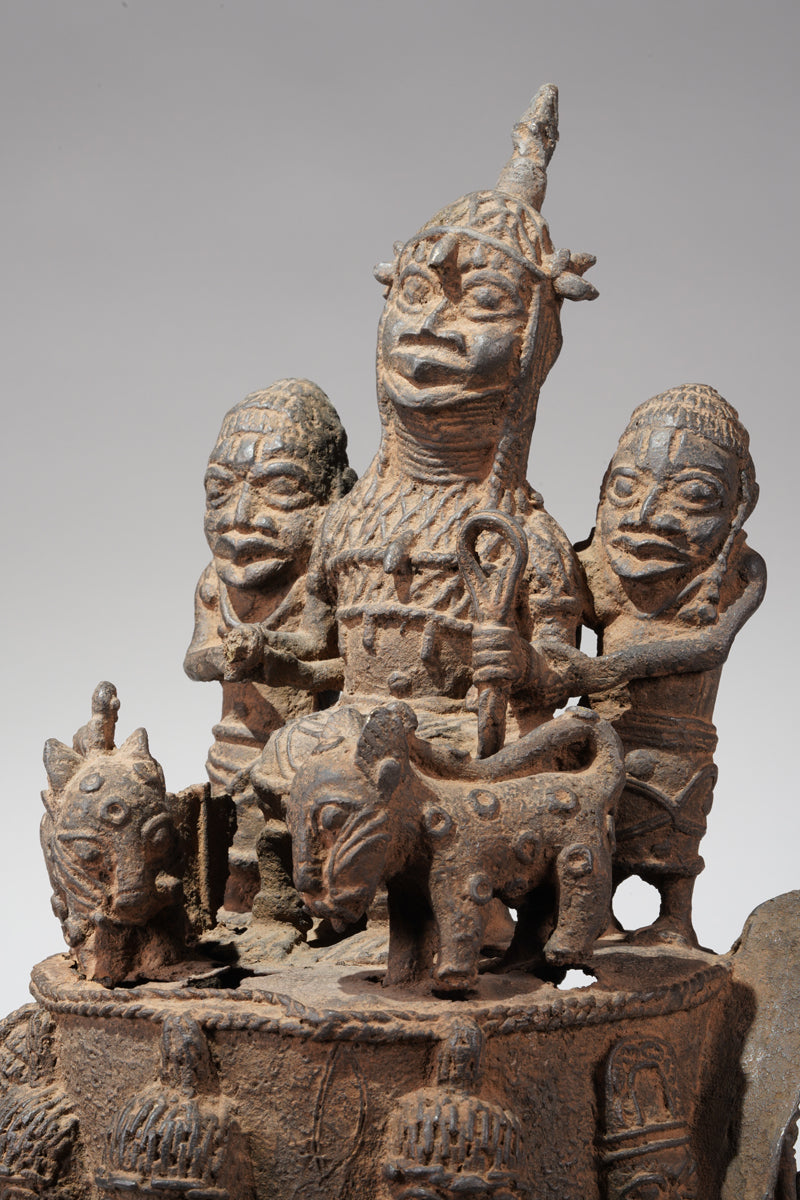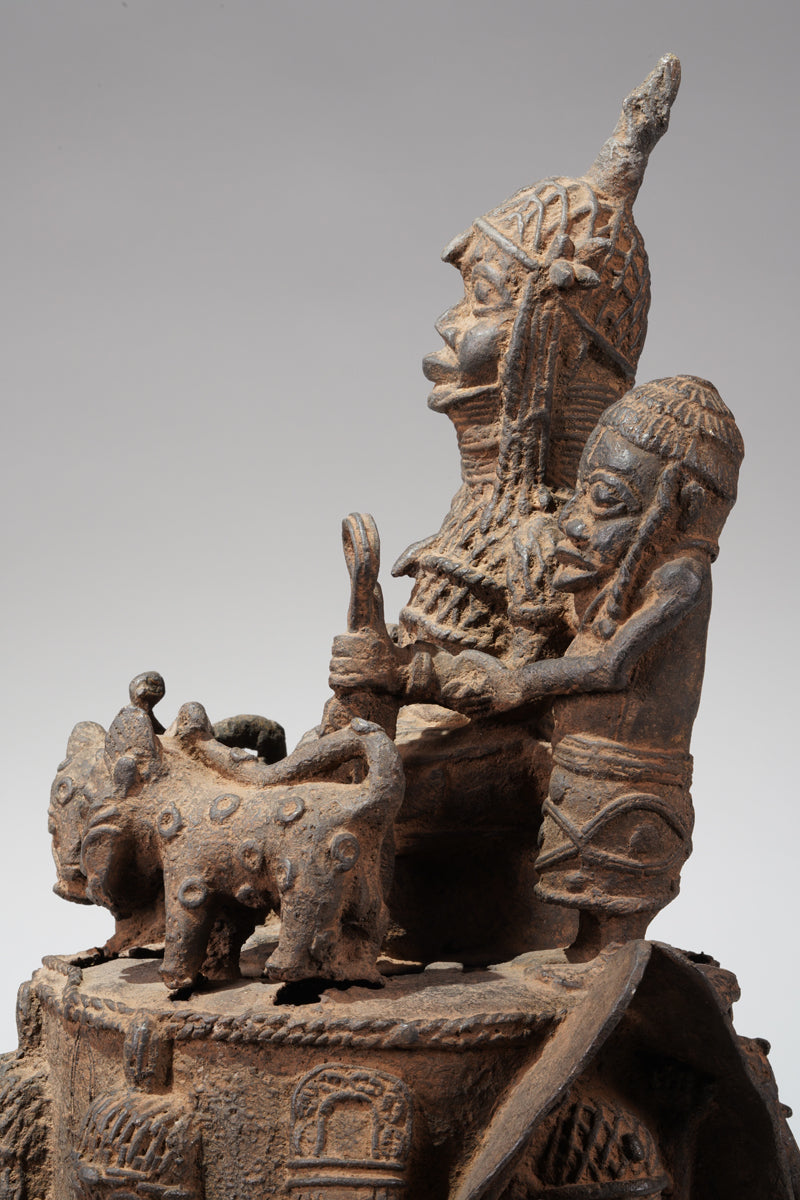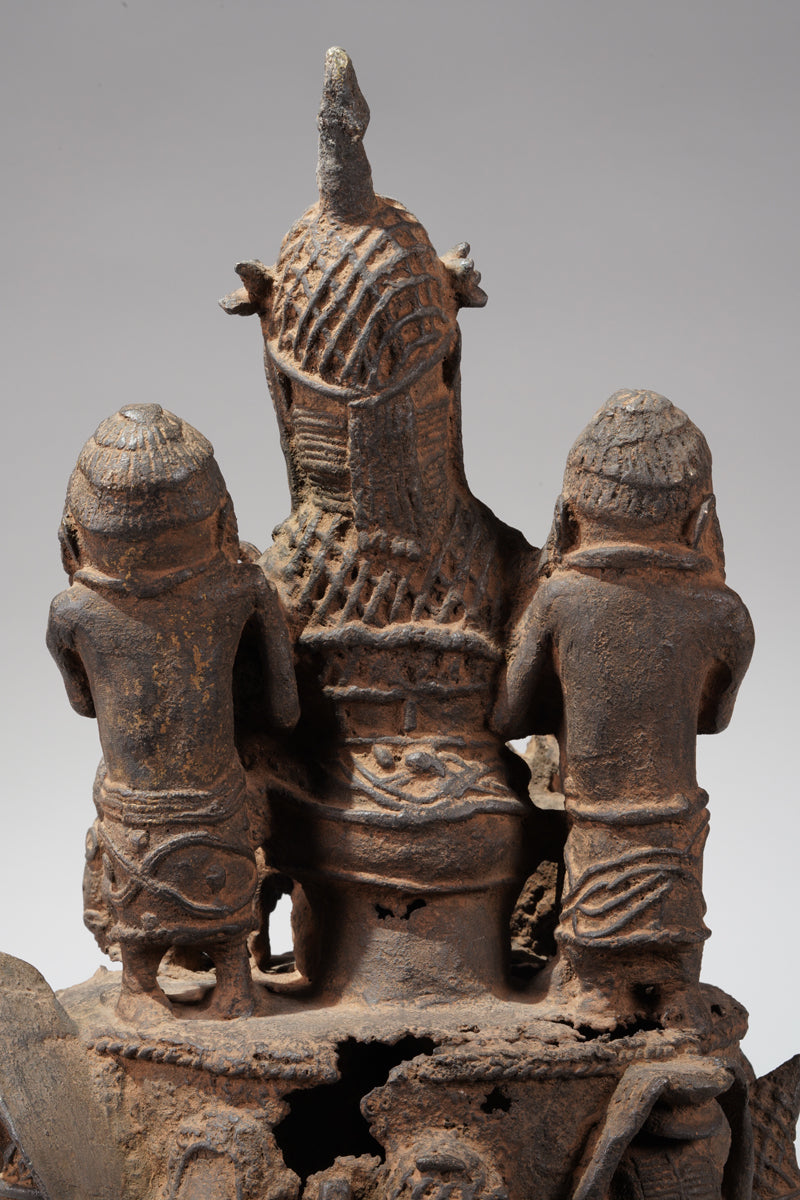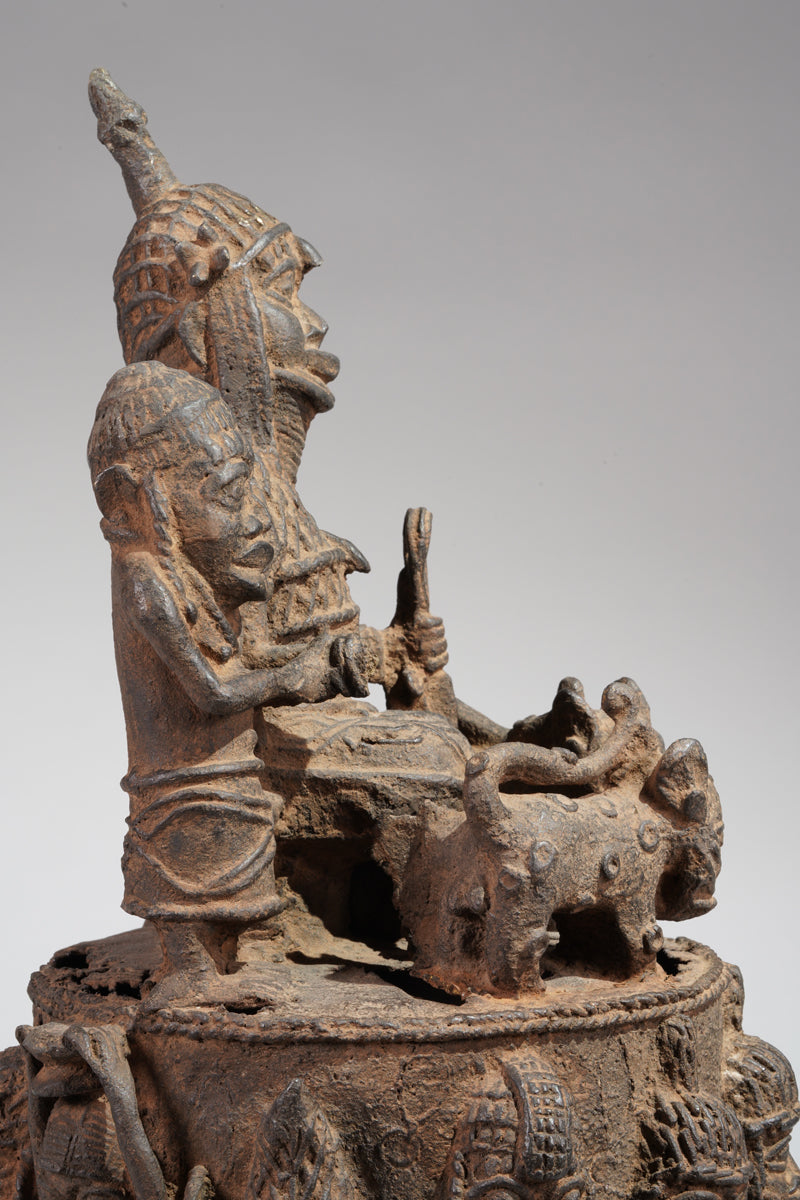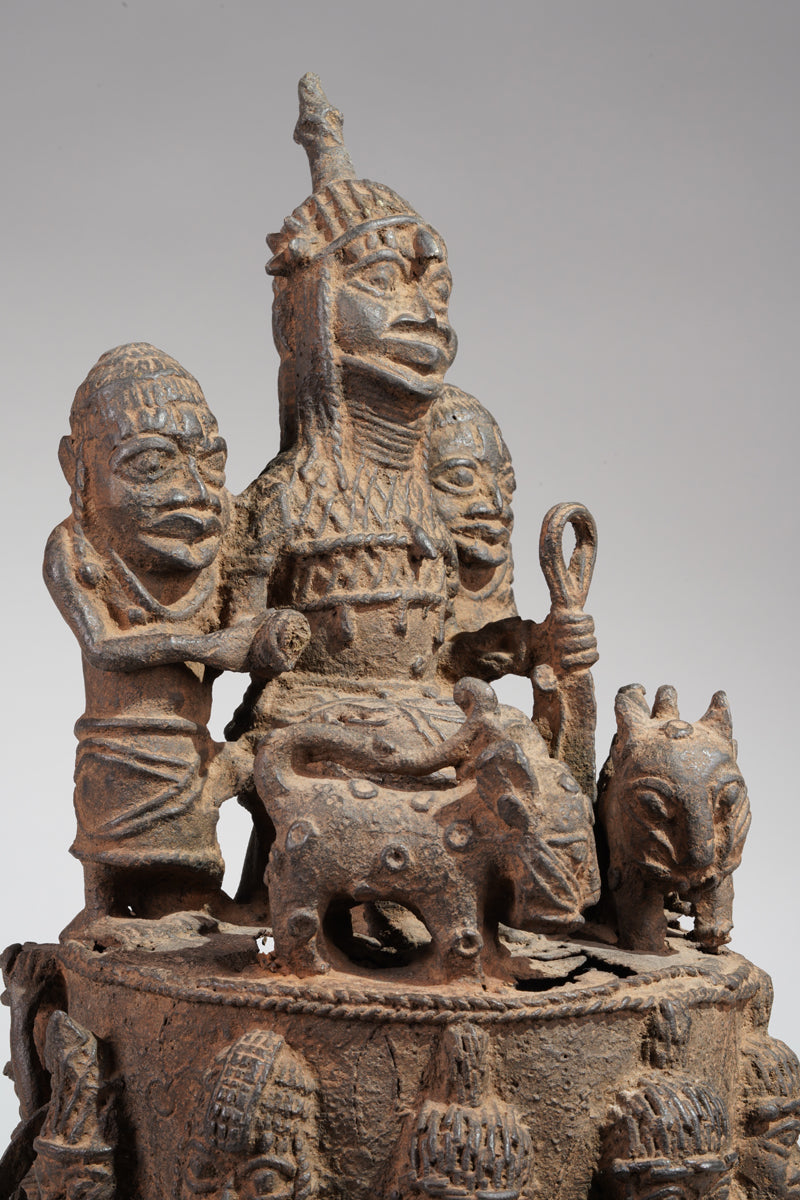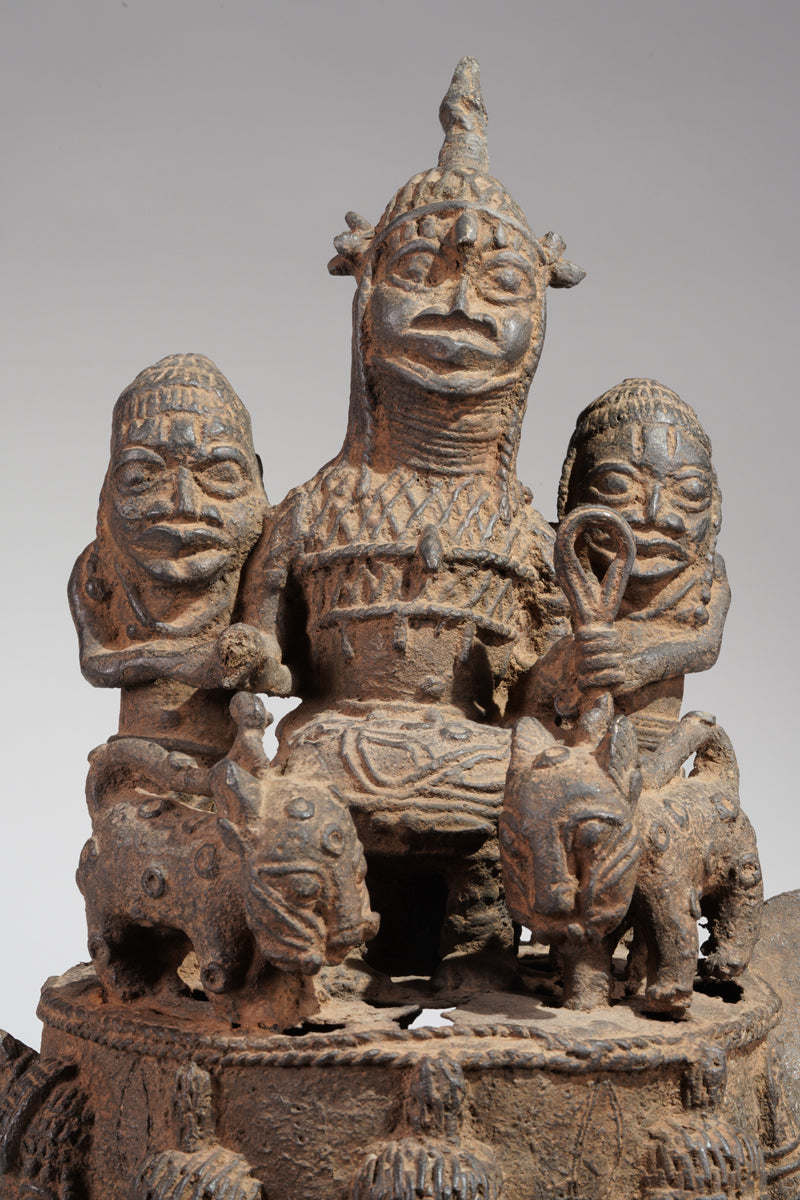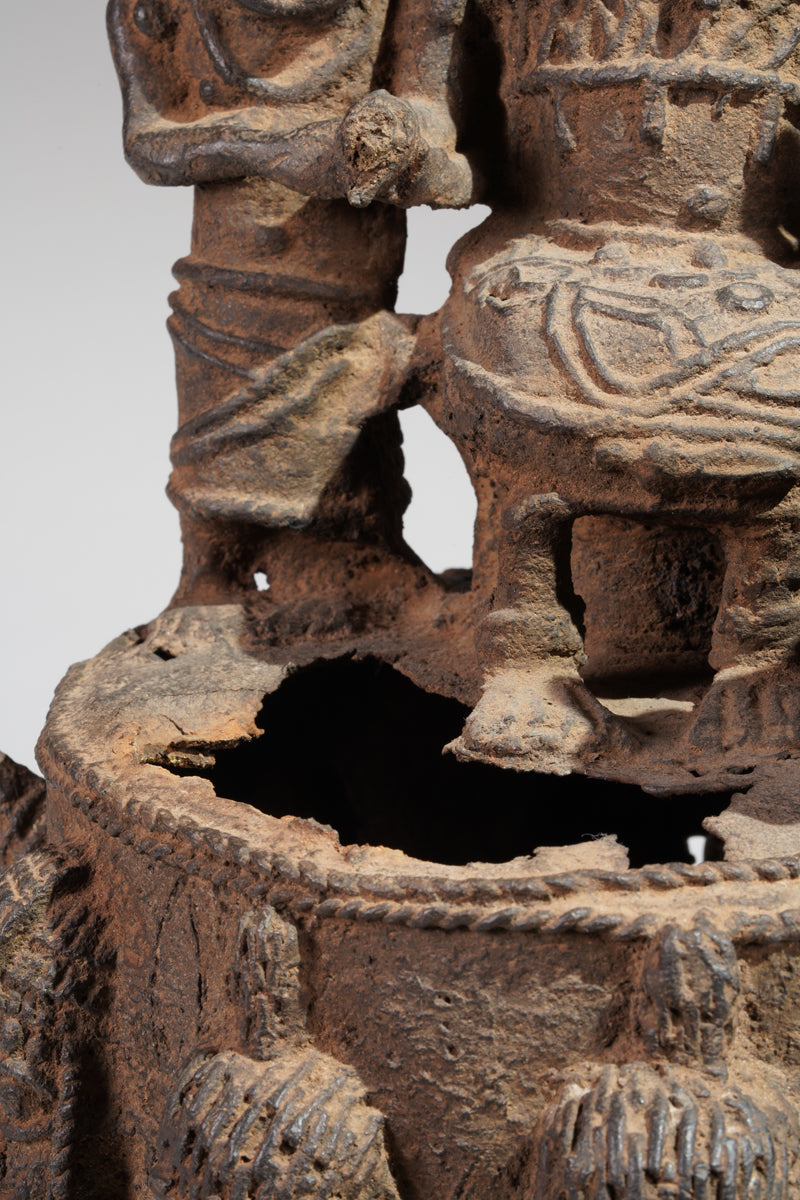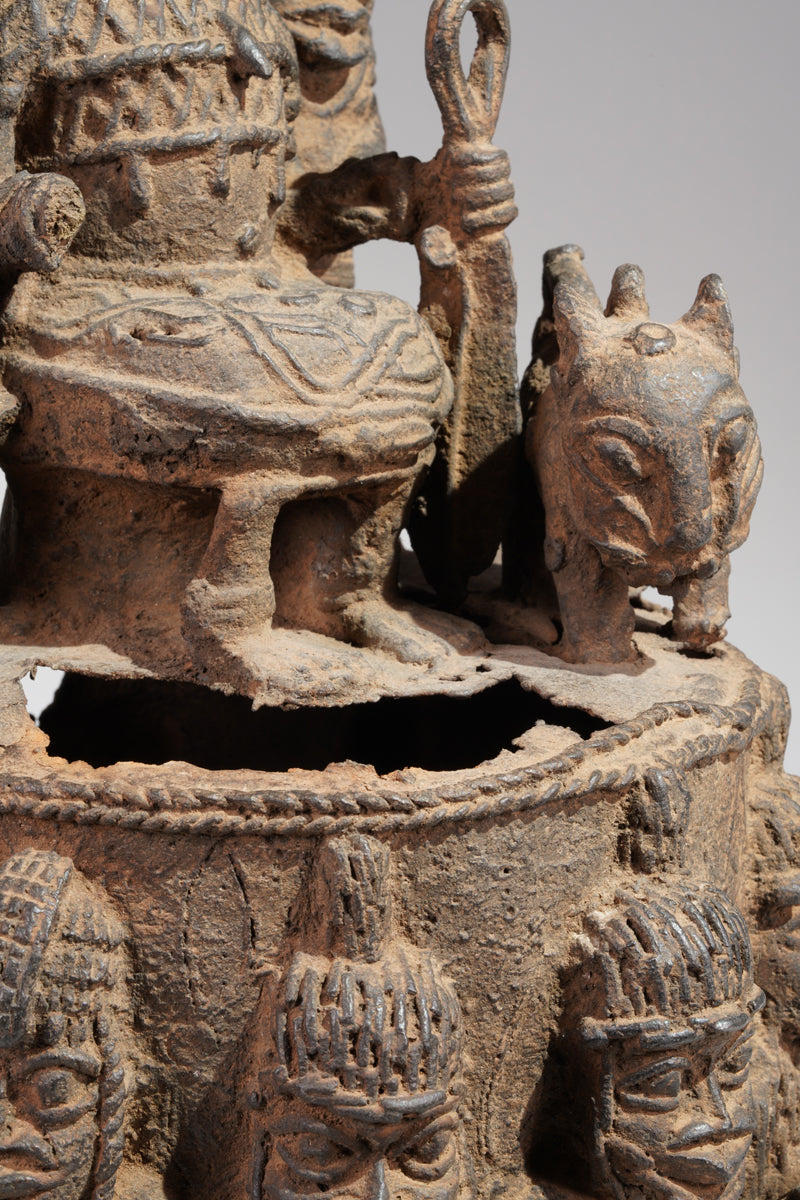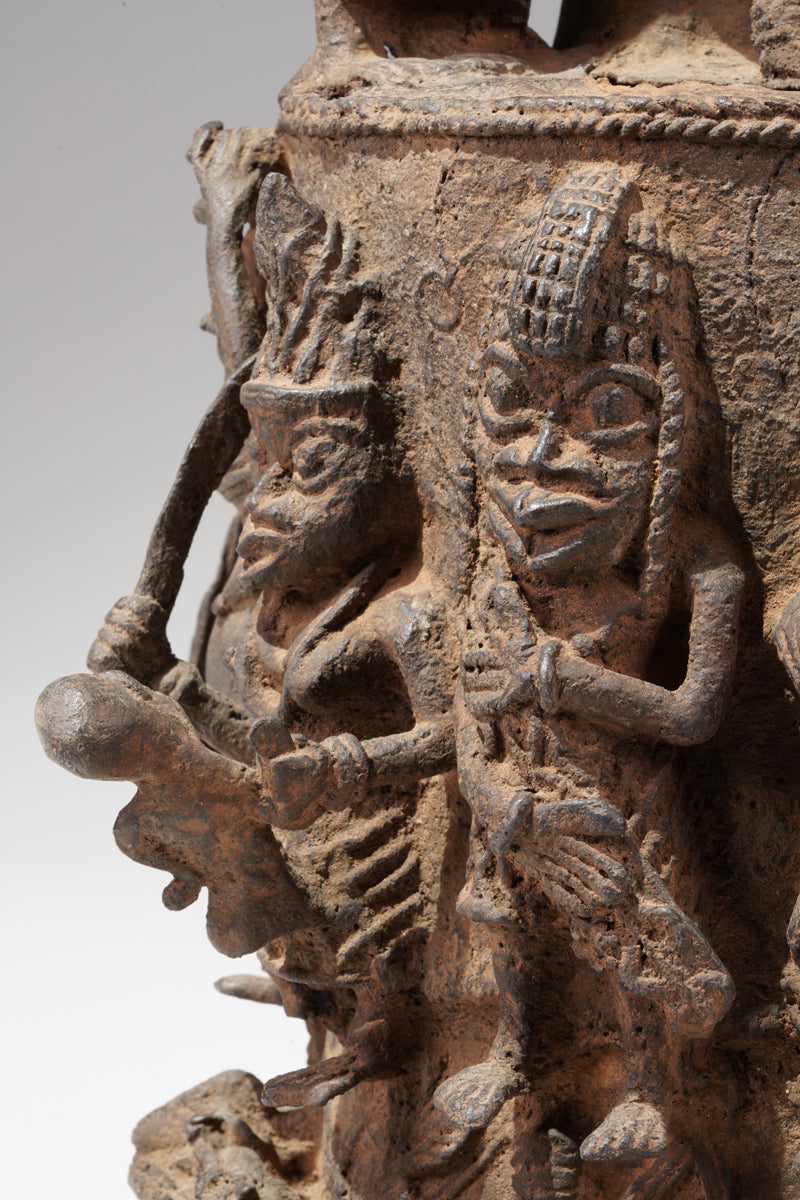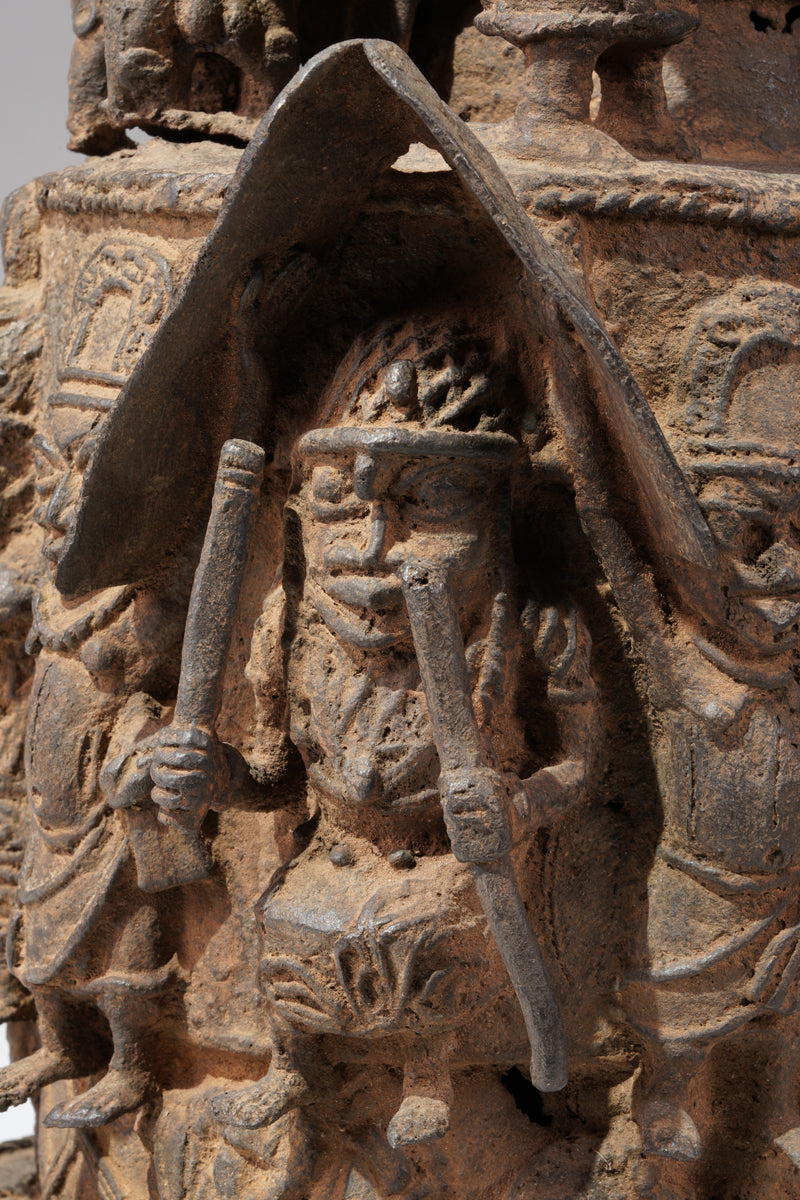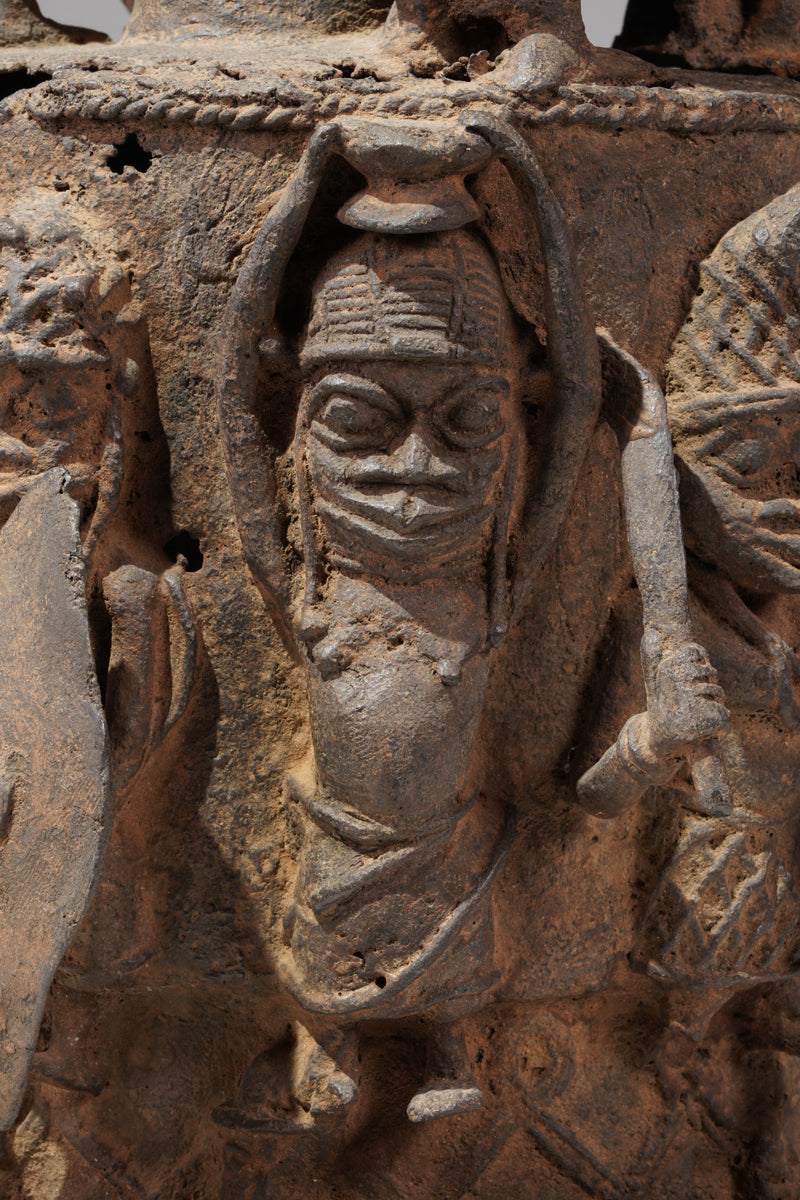Galerie Wolfgang Jaenicke
An "Altar of the Hand" - Ikegobo
An "Altar of the Hand" - Ikegobo
Couldn't load pickup availability
An "Altar of the Hand" - Ikegobo - Nigeria, lost-wax cast in brass. Cylindrical in form with central figure of Oba (king) on top wearing beaded coral regalia and holding two downturned eben swords. Flanked by two kneeling chiefs, with leopard figures in front, oxidations and remnants of laterith encrustration, the left leopard was broken off, but can be replaced to the fragmentary base on top, see the following photos of this sequence. Certificate of origin and provenance.
Ikẹgobọ are placed on ancestral altars. Typically, the Ọba, Iy’Ọba and certain privileged chiefs may use cast forms, whereas chiefs use wooden ones (Dean, 1983). Altars of the hand are cylindrical, the outer sides decorated with relief carving. They are sometimes topped with sculptural elements, elephant tusks or antelope horns, and wooden altars are topped with a conical projection which mimics a tusk. Worship of the hand is important in Edo belief; the hand relates to an individual’s success with different skills, qualities or characteristics, such as craftsmanship, hunting or warcraft.
Chief Jacob Egharevba (1949, pp.88-89) worship of the ‘god of the hand’ emerged during the fifteenth century, during the reign of Ọba Ewaure I. What is less certain is whether altars of the hand also emerged at this time, or were a later development. Today, Ikẹgobọ continue to be used on altars by individuals who have high-ranking positions within the palace societies. " Source: Digital Benin
"In the kingdom of Benin, ikegobo, or "altars to the hand," celebrate the accomplishments of exceptional individuals. The hand is associated with action and productivity, and is considered the source of wealth, status, and success for all those who depend on manual skill and physical strength. Altars of this kind are commissioned in terracotta, wood, or brass, depending on the status of the patron.
"This ikegobo is an important historical document associated with the reign of Akenzua I. In the early eighteenth century, rebellious chiefs challenged Akenzua's leadership and threatened the unity and stability of the kingdom. Ehenua, Akenzua's ezomo or military commander, played a central role in defeating these forces and restoring order to the kingdom. In recognition of his heroism and service, Akenzua presented Ehenua with an ikegobo illustrating his military triumph.
Height: 46 cm
Weight: 12 kg




















